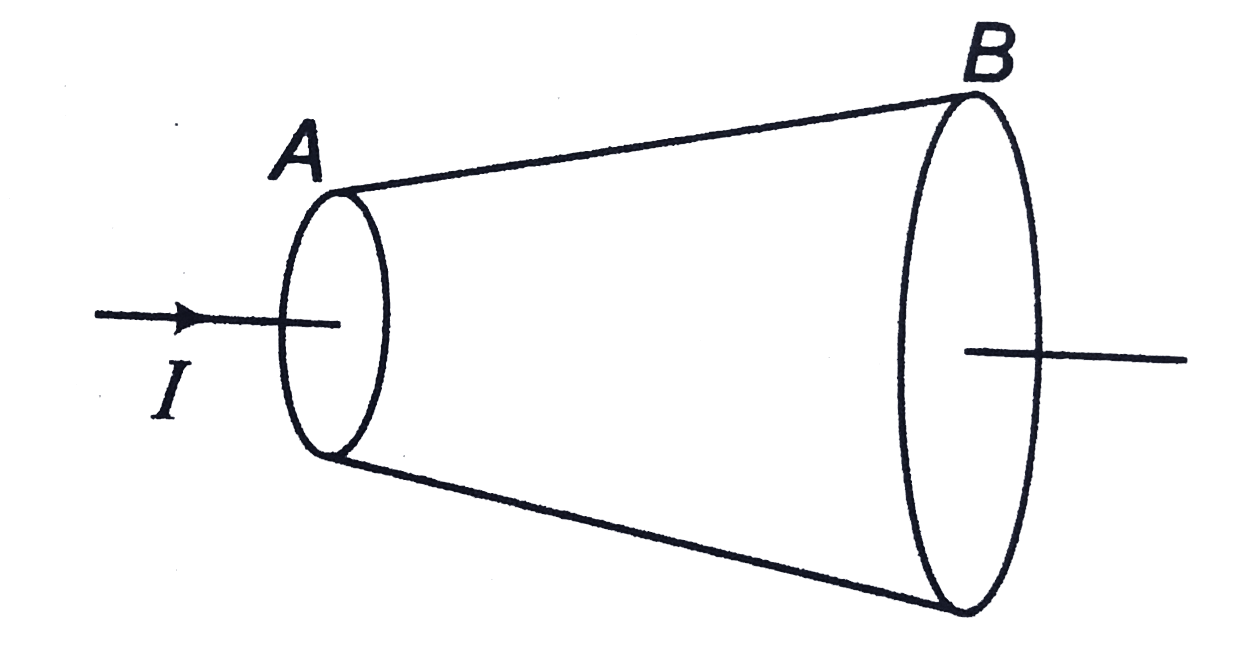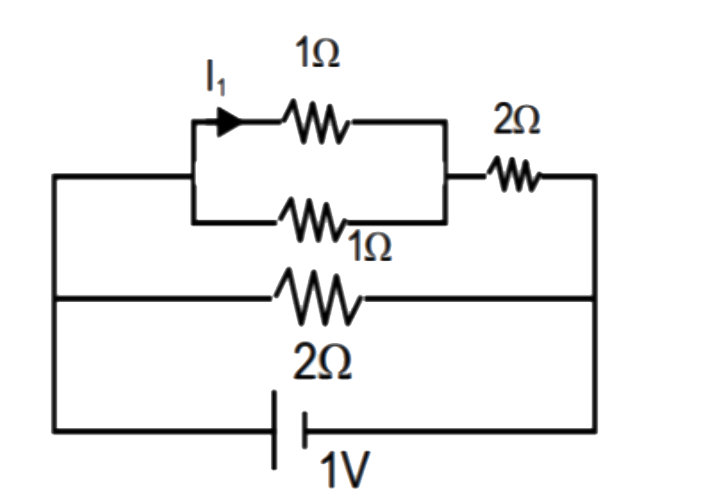Current 'I' flowing through a metallic wire of area of cross-section 'a' is given by the equation I=naevd. What is the meaning of the symbols 'n' and 'vd'?
To solve the question regarding the equation for current I flowing through a metallic wire, we start by analyzing the given equation:
I=nAevd
Where:
- I is the current,
- n is the number of charge carriers per unit volume,
- A is the area of cross-section of the wire,
- e is the charge of an electron (approximately 1.6×10−19 coulombs),
- vd is the drift velocity of the charge carriers (electrons in this case).
Step-by-step Explanation:
1. Identify the Components of the Equation:
- The equation expresses the relationship between current, charge carriers, and their motion through a conductor.
2. Understanding the Symbol n:
- The symbol n represents the number of charge carriers (electrons) per unit volume in the metallic wire. This means how many electrons are present in a unit volume of the conductor.
3. Understanding the Symbol vd:
- The symbol vd denotes the drift velocity of the electrons. Drift velocity is the average velocity that a charge carrier, such as an electron, attains due to an electric field applied across the conductor. It is the net velocity of the electrons as they move through the wire.
4. Conclusion:
- In summary, n is the number of electrons per unit volume, and vd is the drift velocity of these electrons. Together with the area of cross-section and the charge of an electron, they determine the total current flowing through the wire.
Final Answer:
- n: Number of charge carriers (electrons) per unit volume.
- vd: Drift velocity of the electrons.
- I is the current,
- n is the number of charge carriers per unit volume,
- A is the area of cross-section of the wire,
- e is the charge of an electron (approximately 1.6×10−19 coulombs),
- vd is the drift velocity of the charge carriers (electrons in this case).
- The equation expresses the relationship between current, charge carriers, and their motion through a conductor.
- The symbol n represents the number of charge carriers (electrons) per unit volume in the metallic wire. This means how many electrons are present in a unit volume of the conductor.
- The symbol vd denotes the drift velocity of the electrons. Drift velocity is the average velocity that a charge carrier, such as an electron, attains due to an electric field applied across the conductor. It is the net velocity of the electrons as they move through the wire.
- In summary, n is the number of electrons per unit volume, and vd is the drift velocity of these electrons. Together with the area of cross-section and the charge of an electron, they determine the total current flowing through the wire.
- n: Number of charge carriers (electrons) per unit volume.
- vd: Drift velocity of the electrons.
Topper's Solved these Questions
- SAMPLE PAPER 2022Book:ICSE MODEL PAPERChapter:SAMPLE PAPER 2022Exercise:PART II (SECTION A)
Explore 12 Videos
- SAMPLE PAPER 2022Book:ICSE MODEL PAPERChapter:SAMPLE PAPER 2022Exercise:PART II (SECTION B)
Explore 8 Videos
- SAMPLE PAPER 2022Book:ICSE MODEL PAPERChapter:SAMPLE PAPER 2022Exercise:PART II (SECTION C)
Explore 8 Videos
Similar Questions
A stready current i is flowing through a conductor of uniform cross-section. Any segment of the conductor has
View SolutionCurrent is flowing through a wire of non-uniform cross section. Cross section of wire at A is les than the cross section of wire at B. Then match the following

View Solution
Assertion : Current I is flowing through a cylindrical wire of non-uniform cross-section as shown. Section of wire near A will be more heated compared to the section near B.
Reason : Current density near A is more.
View SolutionA current I is flowing in a straight conductor of length L. The magnetic induction at a point distant L4 from its centre will be
View SolutionA current i passes through a wire of length l , radius of cross-section r and resistivity ρ . The rate of heat generation is
View SolutionWhen a steady current flows through a metal conductor of non-uniform cross-section , then drift velocity is
View SolutionA current .I. flows through a metallic wire of radius .r. and the free electrons in it drift with a velocity vd. Calculate the drift velocity of the free electrons through the wire of the same material, having double the radius, when same current flows through it.
View SolutionThe current I1 (in A) flowing through the 1Ω resistor in the given circuit is

View SolutionA steady current is set up in a metalic wire of non- uniform cross-section. How is the rate of flow free electrons related
View SolutionAssertion : If a current is flowing through a conducting wire of non-uniform cross-section, drift speed and resistance both will increase at a section where cross-sectional area is less.
Reason : Current density at such sections is more where cross-sectional area is less.
View Solution
